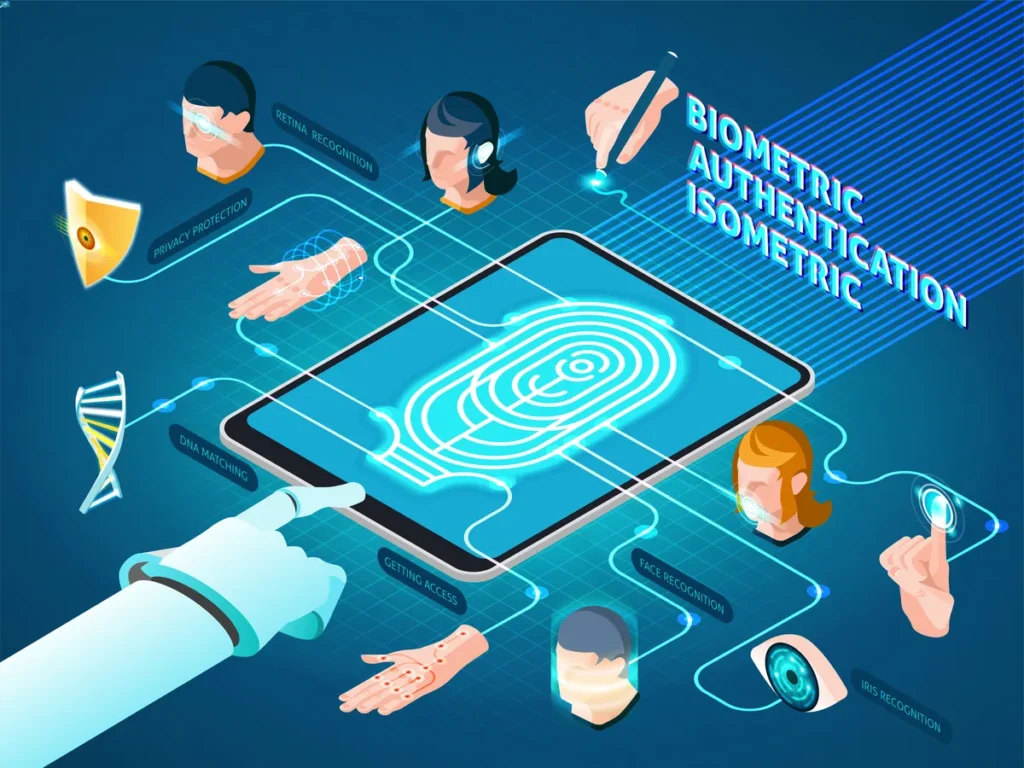Table of Contents
Biometric Security

Biometric security has revolutionized the way we protect digital environments. Gone are the days of relying solely on passwords and PINs, which can be forgotten, stolen, or guessed. Biometric authentication leverages unique physical and behavioral traits of individuals, providing a more robust and convenient approach to safeguarding sensitive data and resources. In this blog, we will explore some of the latest advancements in biometric security for digital environments and how they are shaping the future of cybersecurity.
Facial Recognition
In recent years, facial recognition software has evolved dramatically. Advanced algorithms can now accurately identify individuals based on facial features, even in challenging lighting conditions. Moreover, facial recognition systems have become faster and more efficient, enabling real-time authentication for various applications, including unlocking smartphones, authorizing financial transactions, and enhancing physical security in public spaces.
Iris and Retina Scanning
Iris and retina scanning are biometric techniques that analyze the unique patterns in a person’s eye. These methods offer a high level of accuracy and security, as the patterns are highly distinctive and difficult to replicate. With the advent of compact and affordable iris scanning devices, these biometric systems are becoming more accessible and finding their way into various sectors, such as healthcare, government, and finance.
Voice Recognition
Voice biometrics have gained popularity due to their non-intrusive nature and ease of use. The latest voice recognition systems can analyze an individual’s vocal characteristics, including pitch, tone, and speech patterns, to verify their identity. Voice recognition is now being integrated into customer service interactions, telephone banking, and even home automation systems.
Behavioral Biometrics
Behavioral biometrics analyze unique behavioral patterns of users, such as typing speed, mouse movements, and navigation habits. This approach can continuously authenticate users during their digital sessions, providing an extra layer of security without interrupting the user experience. The ability to detect anomalies in behavior can help identify potential fraud attempts and improve overall cybersecurity.
Palm Vein Recognition
Palm vein recognition is an emerging biometric technology that examines the intricate vein patterns in a person’s hand. Since veins are internal and invisible to the naked eye, this method offers a higher level of security against spoofing attempts. Palm vein recognition is already being used in physical access control systems and time attendance systems.
Multi-Modal Biometrics
Advancements in biometric security have led to the rise of multi-modal biometrics, where multiple biometric identifiers are combined for enhanced accuracy and security. For example, a system may use facial recognition along with voice or fingerprint authentication to ensure a higher level of confidence in user identity.
Biometric Encryption
Biometric encryption is a cutting-edge approach that ensures biometric data remains secure even in storage or transmission. Instead of storing raw biometric data, the system stores encrypted templates generated from the original biometric samples. This greatly decreases the possibility of data breaches and unauthorized access.
Conclusion
As digital environments continue to expand and evolve, the importance of robust security measures cannot be overstated. Biometric security offers a promising solution by leveraging the uniqueness of individuals’ physiological and behavioral traits. Advancements in facial recognition, iris scanning, voice recognition, behavioral biometrics, palm vein recognition, multi-modal biometrics, and biometric encryption are transforming the way we protect our digital assets and personal information. These advancements not only enhance security but also simplify user experiences, making biometric authentication a critical component of the future of cybersecurity. Embracing these innovations can help individuals and organizations stay one step ahead in the ongoing battle against cyber threats



